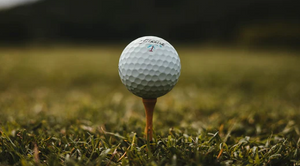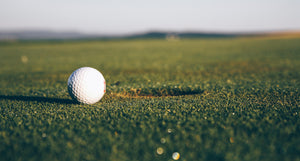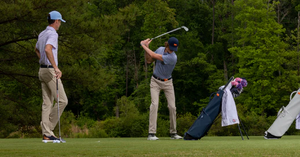8 Types of Golf Course Grass
Golf is one of the oldest sports played around the world. Courses come in a wide variety of styles, lengths, and types. One of the key components that contribute to the lush, green beauty of a golf course is the type of grass used. Golf course grasses are carefully selected based on various factors, including climate, soil type, and maintenance requirements. In this blog, we'll explore the eight types of golf course grasses that are commonly used to create the perfect playing surface for golf enthusiasts.
What Type of Grass Is Used on Golf Courses?
Bermuda
Known for its resilience and ability to withstand heavy foot traffic, Bermuda is a warm-season grass that thrives in hot climates. Its fine texture and rapid growth make it a popular choice for fairways and tees. Additionally, Bermuda grass does not require much water and can continue to thrive in drought-like conditions, making it suitable for regions with any water shortage. The USGA has found that switching to Bermuda grass has made substantial differences in areas of drought and challenging summer conditions.
Bentgrass
Bentgrass remains a popular choice for golf courses, especially in cooler climates. Known for its fine textures, velvety appearance, and dense growth, bentgrass excels in cooler climates. It’s often used on golf course putting greens due to its ability to provide a smooth, even surface. Bentgrass requires meticulous maintenance, including frequent mowing and careful watering, to maintain its desired characteristics. Creeping bentgrass is a common variety, forming a dense carpet-like surface that can withstand low mowing heights.
Zoysia
Zoysia grass is a warm-season pitch that strikes a balance between the durability of Bermuda and the fine texture of Bentgrass. It has a dense growth pattern and can tolerate both shade and sunlight, making it versatile for various areas on a golf course. Zoysia grass is known for its ability to recover quickly from damage, making it suitable for high-traffic areas.
Kentucky Bluegrass
Kentucky Bluegrass is a cool-season grass that is widely used in northern regions with cold winters. It is valued for its lush, dark green appearance and fine texture. While it is commonly found on fairways and roughs, Kentucky Bluegrass is not typically used on putting greens due to its slower growth and maintenance requirements.
Ryegrass
Ryegrass is a cool-season grass often used as an overseeding option to maintain a vibrant green color during the winter months. It germinates quickly and provides temporary cover when warm-season grasses go dormant. While not a primary type of turf for golf courses, ryegrass plays a crucial role in keeping courses visually appealing year-round.
Seashore Paspalum
Seashore paspalum is a warm-season grass that has gained popularity in coastal regions due to its ability to withstand saltwater irrigation. It's commonly used on seaside golf courses where saltwater exposure is a concern. Paspalum grass varieties offer visually pleasing turf with a unique texture, making them a suitable choice for specific course locations. This grass type is often used for tees, fairways, and greens in seaside golf courses, providing a lush and resilient playing surface in challenging coastal environments.
Fescue
Fescue is a cool-season grass that is often used in rough areas on golf courses. It's known for its fine texture and tolerance to shade, making it suitable for creating natural-looking landscapes. Fescue is consistent through droughts and requires less maintenance than some other grass types, making it one of the more eco-friendly choices.
Buffalograss
Buffalograss is a warm-season grass native to North America, known for its drought tolerance and low-maintenance characteristics. While Buffalograss is not as commonly used on golf courses as some other grass types, it's gaining popularity in certain regions due to its unique qualities. Its deep root system allows it to access water from lower soil which makes it thrive in areas where water conservation is a priority. Buffalograss is becoming the more environmentally friendly grass with is sustainability and contributions to biodiversity.
What Is the Easiest Grass To Play Golf On?
The easiest grass to play golf on will vary for each player as it depends on your playing style and skill level. Two types that are considered easier to play on are Bermuda and Ryegrass. However, it's important to note that the overall difficulty level depends on various things, such as maintenance practices, climate, and golfer preferences. Many golf courses use a combination of grass types on different parts of the course to provide a diverse and balanced playing experience.
While it's a subjective choice, the average golfer may prefer the forgiving fairways and consistent putting surfaces of Bermuda or Ryegrass. More experienced players might want a challenge that demands strategy and precision. Even the PGA Tour says not to underestimate how much grass type can affect your game. The best way to find out which type you find the easiest is to get out there and try them out.
Frequently Asked Questions
Do Golf Courses Use Kentucky Bluegrass?
Yes, Kentucky Bluegrass can be commonly found at golf facilities in northern regions with colder winters. This type of turf can be less costly to maintain and cannot withstand lower mowing heights, so it's typically seen in the rough; however, older golf courses that have longer and fluffier fairway conditions use Bluegrass.
Is Zoysia Grass Used on Golf Courses?
Known for its durability and capabilities of handling drought and foot traffic, Zoysia grass has become one of the more popular turf options with many golf courses. Zoysia can thrive in multiple climates while staying green longer and requiring less maintenance once it’s established.
What Is the Most Common Golf Course Grass?
Bentgrass is one of the most common types of grass found on golf courses. It comes in different varieties but can typically be found in coastal regions or areas with cooler summers. It’s dense and flat, making it easier to maintain and mow at lower heights for putting and even fairways.
Final Thoughts
Now that you’re more familiar with the different golf course grass types, it's time to hit the green and give it your best swing! Browse STITCH Golf’s apparel, golf gear, and golf bags to ensure you arrive at your next game in style.



